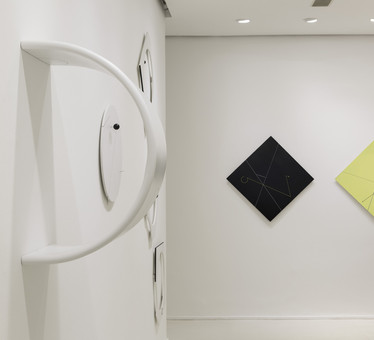macaparana

São Paulo, Brasil
11/06/2016 - 09/07/2016
Macaparana’s art is essentially Brazilian, although it is located at the opposite pole to the Brazilianism of our modernist art, which dealt with national themes. I say that his art is Brazilian because it stems from another aesthetic process, which began in Brazil with the introduction of concrete art, in the early 1950s. This art, which was essentially universalist — since the basis of its language was geometry – which had nothing national or regional at all, meant a break with the Brazilian modernist tradition, represented by Anita Malfatti, Tarsila do Amaral and Di Cavalcanti, among others, passing through Segall and Portinari. Concretism, with its geometric language, opens a new path for Brazilian plastic arts but, at the same time, leads to an impasse that will give rise to neoconcretism. This is because, by breaking with concrete norms, neoconcretism introduces other options in constructive art, different from those pointed out by the aesthetics of the School of Ulm. The basic innovation of neoconcretism was to eliminate the painting as a basic element of pictorial language. It is violated and replaced by what neoconcretists called a non-object. In spite of the originality of Macaparana’s art — whose own contribution is indisputable — it would not have been born if the neoconcretists had not fundamentally changed the role of the painting as a support for the pictorial language. There, so to speak, a new language is born. What does this new language consist of? In the fact that the painting ceases to be the place where the language of painting happens to be that language itself. For this reason, it changes shape since making art now means reinventing it, making it the object of art. In saying this, I am obviously talking about Lygia Clark, Willys de Castro but also Macaparana, heir to this new path opened to art by Brazilian artists. Another heritage, present in Macaparana’s work, is geometry – straight lines, rectangles, hexagons, as well as invented shapes, another geometry, which is not to be confused with the abstract figure on the frame’s space either: no, geometry , in this case, it is the work itself, the wooden board in the form that the artist gives it. Look: I’m saying that geometric art in Brazil carried out a revolution that, following this line, stopped painting and started inventing with colors and geometric shapes a different universe, a geometry other than the art of Macaparana is a notable example.
Ferreira Gullar, “A new path”, 2016
Dan Contemporary Gallery invites everyone to visit the studio of the artists represented, through the videos, as a way to bring the public closer to their production.